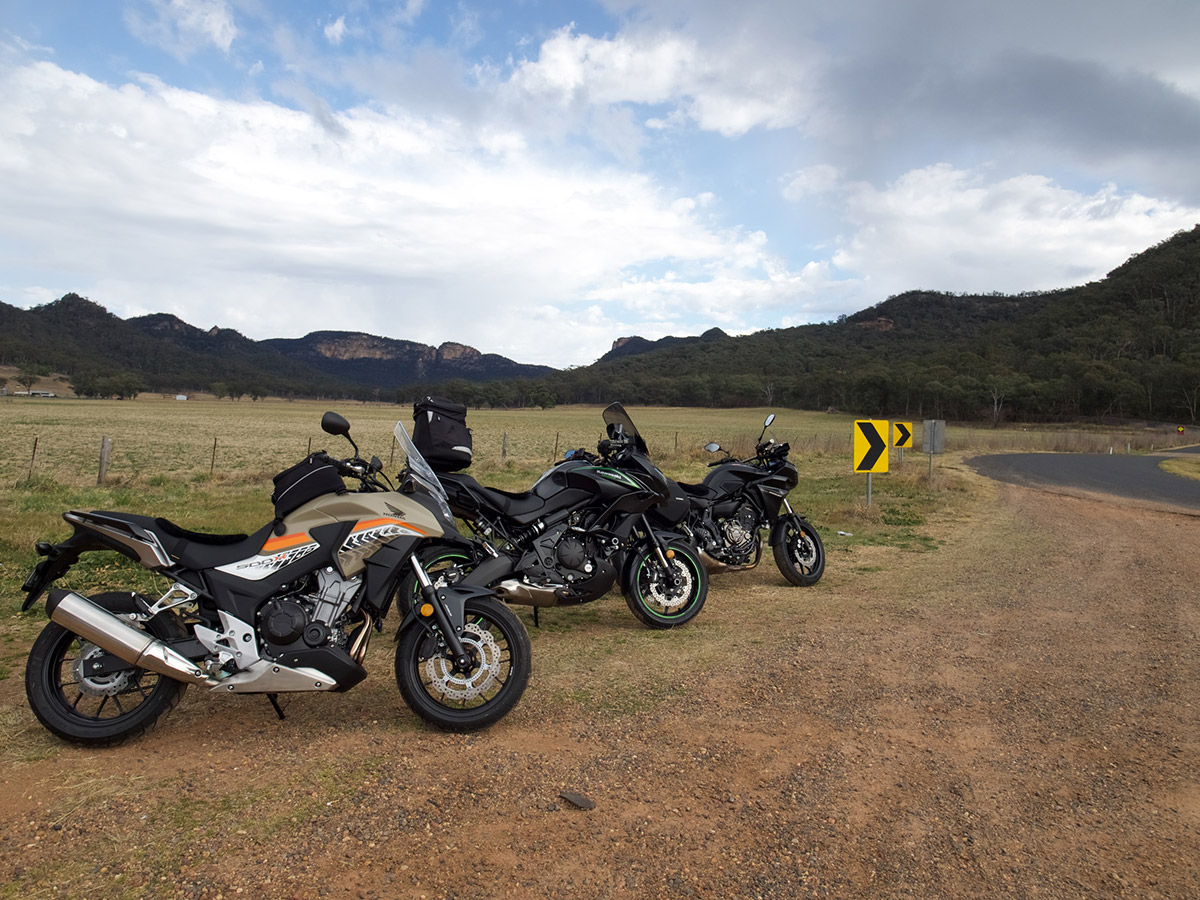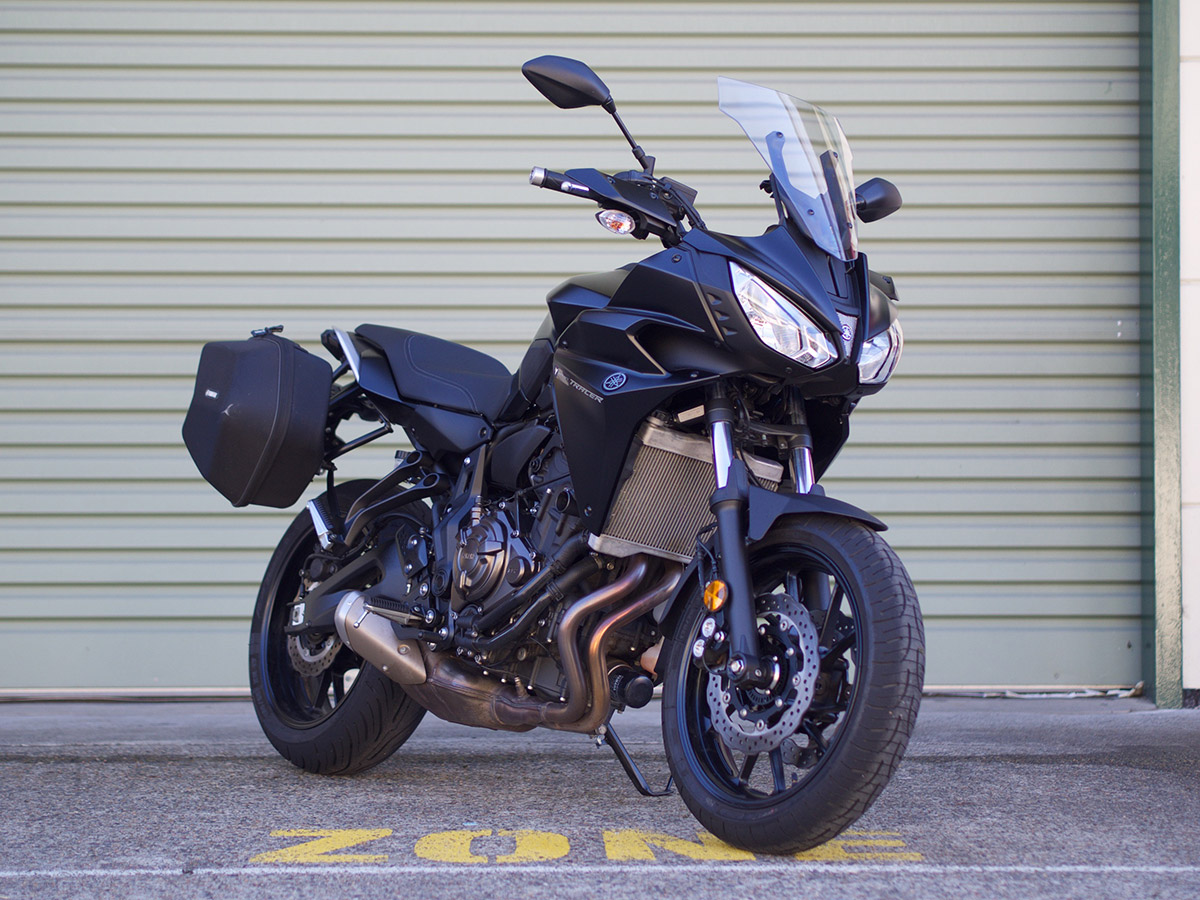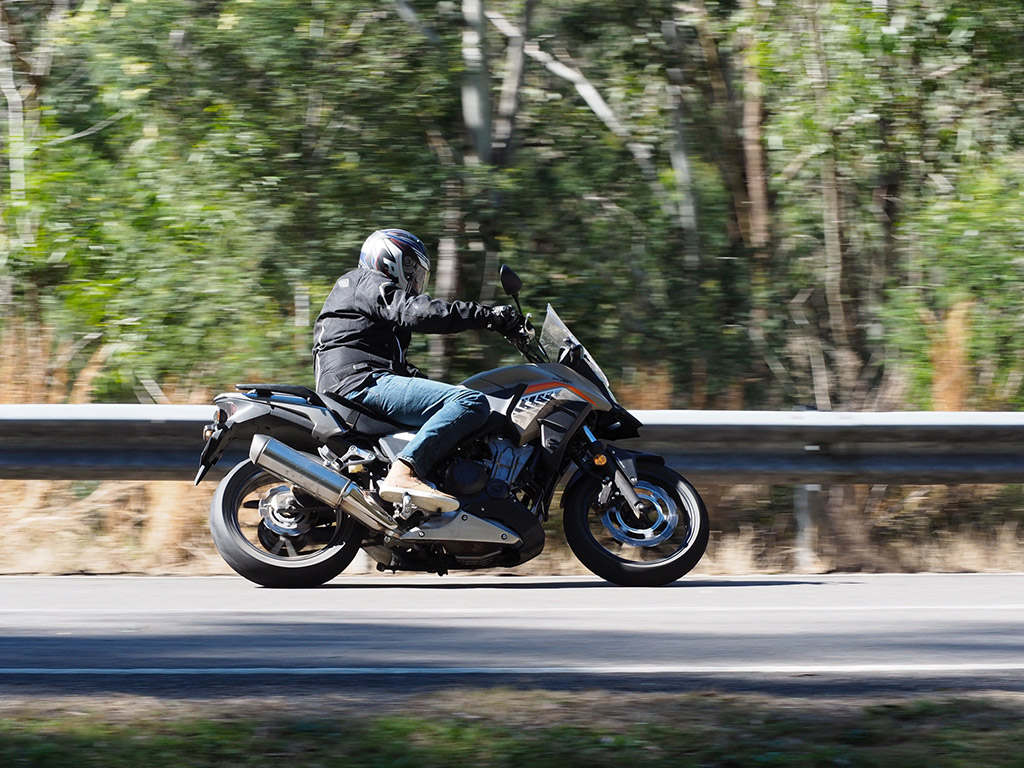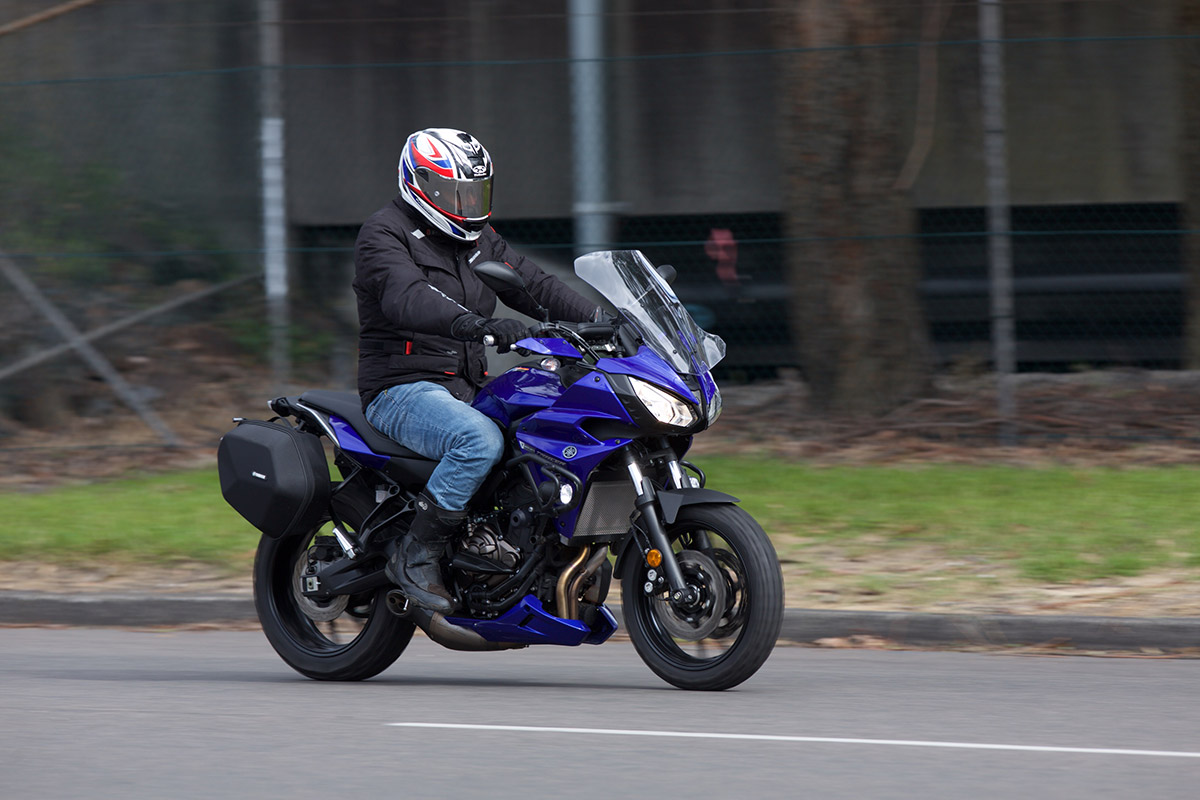We live in an unpredictable world. However, some things are entirely predictable. For instance, when motorcyclists congregate, sooner or later the conversation will turn to… ‘what’s the best bike?’ It’s one of our favourite group activities.

These days, ‘best bike’ depends on the question, best for which category? Motorcyclists can’t agree on much, but we can agree the perfect bike isn’t on the market yet. It would be nice to own one bike for commuting, touring, dirt roads and observed trials, but, it’s not happening any time soon.
The category that comes closest is ‘dual-sport’.

The sales pitch simple: ‘any road, any distance’. It’s pretty right too. If you want to do serious kilometres in a country with a lot of dirt road, this is the category for you. Problem is there’s a multitude of choices which range from ‘wallet friendly’ to ‘wallet frightening’ and performance ranging from ‘basic’ to ‘ballistic’.
Now, I don’t believe there is a ‘best bike’ in this category, but I do believe there is a best bike for you…
Do you think it’s possible to have fun on a bike that costs under $20,000, with less than 100 horsepower? If you answered “no, and it’s your shout!”, the bike you seek is available from the local BMW, KTM or Ducati dealer. Job done, your wallet hurts and you’ll have lots of fun.
If, on the other hand, you answered ‘yes’, then many options appear, and much money can be saved. Saving money is a wonderful thing, but it’s possible to overshoot it too.
Watch this space…
2017 and beyond looks good with Royal Enfield coming to the party and CFMoto has also released its 650MT. Not to mention Suzuki beefing up the V-Strom 650s and Yamaha’s T7 concept could come to life next year.

Where’s the sweet spot?

Easy. The point at which acceptable performance and minimum price intersect. It will depend on you, and there are many things to consider. Things at the top of the pre-purchase check list are: what’s the intended use? Is the ergonomic fit good? And, does it excite you? If the bike doesn’t address all of these points well, a case of ‘buyer’s remorse’ is likely to set-in.
I have to fess up here. I own a KTM 1290 Super Adventure, and it’s impressive. It’s best described as bolting your favourite couch – to a Saturn 5 rocket… However, I’ve discovered it’s not the answer to every adventure bike question. How am I going to get 250Kg stopped on gravel before that corner? How am I going to pick this thing up by myself? The second question is often asked straight after the first.
When buyers first contemplate entering this segment; a couple of decisions need be made before arriving at a short list of potential bikes.
What size front wheel?
I wouldn’t fixate on this too much. 17-inch wheel bikes will handle dirt without issue… as long as you don’t try and be an enduro star. 21-inch wheels only become reluctant to turn when moving at ‘you’re under arrest’ speeds. 19-inch wheels; well, depending on who you talk to, they are either a good compromise, or hopeless on both dirt or tar. I’m in the good compromise camp.
Should I go shaft drive?
This video shows the positives of owning a shaft driven machine.
Avoiding chain maintenance is nice, but there’s a 15kg unsprung weight penalty and a power loss for the convenience. I’ve got a Scottoiler on my KTM and it works a treat. It even washes easily.
What about weight?
Modern bikes hide their weight very well, but its only hidden, waiting to kick your butt if you get it wrong. If a bike takes your fancy that is 20Kg lighter than the others, there’s a strong argument in its favour.
Spoked Wheels vs Alloy wheels
There’s a view that if you’re serious about off-road, you must have spokes. Spoked wheels resist impact damage better than alloys, but ridden without respect for the weight, a 250Kg bike will still destroy them. Alloy wheels just fail; spoked wheels buckle a bit, then fail. Alloy wheels run true and are much lighter. That makes them way better for sport/touring work. Your decision.
Say you’ve decided to see more of our land of droughts and flooding rains, you’ve also reached the slightly depressing conclusion that 20- to 30-grand is outside your budget. What are your options?
There are some surprisingly capable bikes below the premium end of the market. There’s a mid-price group between $12,000 to $20,000; and there’s a budget group up to $12,000.
Cost-effective fun

In the mid-price part of the dual sport paddock live a group of capable, but slightly lower pulse rate bikes (relative to top end stuff). Machines like: Triumph Tiger 800; BMW F800GS; KTM 1090; Honda Africa twin and Suzuki V Strom 1000. There’s also others like the Honda VFR800X; Yamaha MT-09 Tracer and Kawasaki Versys 1000. With a preference for sealed roads, they are at the edge of the Dual Sport/Adventure category. They still qualify but it’s worth remembering they won’t explode as soon as the front wheel touches dirt. If you only plan to do occasional, or short dirt, they have merit. This isn’t a complete list, but you get the idea.
In the mid-price group, most manufactures have made design decisions which will limit the bikes in some way. Some have suspension or engines that are only just up to the job. Fortunately; none of them fail in both areas, if you get weak suspension you get a strong engine. The reverse also applies. Others have challenging ergonomics. For Example; I can think of one big seller that has bars most people find annoyingly wide (probably to mask a slow steering issue). These days some of the ergonomics are adjustable and I think this needs to be the new normal. After all, who’d buy a car with a fixed driver’s seat? Fortunately, limitations here are often discovered when you do the ‘showroom sit’.
Getting the best bike for you, is all about considering the compromises you are willing to live with. One of the biggest things to keep in mind is that suspension and ergonomics can be improved with aftermarket parts, but an engine which you think isn’t up to the job is a deal-breaker. You’ll be able to make it comfortable, but you’ll never be happy with the performance, so it’s best not to go there.
Many of these bikes with careful set-up and a few aftermarket parts can easily keep up with the premium bikes in the real world. You know, the one full of potholes and policemen…
Super cost-effective fun
As we move further down the food chain to the budget/entry level of the dual sport world, we again find some quietly capable machines. As a group, these bikes gain commuting ability, proportional to their decline in high speed performance. Most have capacities of less than 700cc and importantly, weigh 30kg less than the big boys. However, these aren’t for everybody. Those who carry pillions, weigh more than 95kg or are just plain horsepower junkies, should note – this is not the place for you. If you aren’t in that subset: a more compact size and lower weight makes for less stress at speeds below ‘full attack’. It also translates to better grip and easier recovery from an ‘oops’ moment (particularly on dirt). Less cost equals less depreciation, and finally with around 70hp for the stronger unrestricted bikes – performance is better than you’d think. At this point I’ll get off the fence and nominate a few I like.
Honda CB500X

First we have Honda’s CB500X. This bike is cheap; some BMW or KTM owners will spend more on accessories than the entire cost of this bike. It’s also light and has surprisingly good suspension for its price. This makes it a bike that is up for lots of dirt road work. Long runs at high speed are within its capability, but it’s working reasonably hard – even harder with luggage on board, and a truck to pass. Luckily there are many aftermarket parts available to further improve its capability. This will tend to defeat the cheap price argument however. As its priced under $10k, if it does fall over, the tears won’t persist for as long. As an overall package it has sharp steering, nimble handling and good comfort. Many dismiss it as an entry level bike, but it’s way better than that. Take one for a test ride and you’ll see what I mean.
Yamaha MT-07 Tracer

My next budget-buster is Yamaha’s new MT-07 Tracer. I rode one around New South Wales a few month’s back and was impressed with its capability. The MT-07 platform is one of Yamaha’s best-selling bikes for good reason. Talk to an owner and you’ll hear no complaints, if pushed, they’ll say “perhaps a bit more power.” That’s why Mr Yamaha makes a MT-09 Tracer. Although the learner-approved variant has a tendency to run out of puff, the biggest strength is still the torque-biased CP2 engine. It’s a sweet 270-degree parallel-twin unit which sounds and feels like a V-twin, with enough power to manage up to highway work without complaint; the fuelling is also spot on.
The steering is good and the suspension is at least up to par. How do I arrive at that conclusion? Well if you ride a bike, and all you can think about is suspension shortcomings – there’s a problem. This is not the case with the Yamaha until you really ask it to do things at the edge of its solid capability envelope. The ‘go fast’ set, (on their plastic covered missiles), may sustain ego deflation – when stalked by a skilled a MT-07 Tracer rider who knows how to keep it on the boil. The Tracer rider just crosses their fingers that the straight sections aren’t too long. Having said that, with a 17-inch front wheel, Yamaha still compromises some off-road capability for genuinely good road handling. But that’s okay.
But wait there’s more, a major ‘upgrade’ of sorts is on its way with the 2018 T7 model. The T7 will use the same CP2 engine, 21/18-inch wheels, long travel KYB suspension and a major style revamp is on the cards too. It looks like a Dakar Racer, its arrival is eagerly awaited.
Kawasaki Versys

Finally, priced in the same ballpark as the MT-07 Tracer is the Kawasaki Versys 650. If you want lots of cornering capability, this is the bike. It has near sportbike cornering clearance, yet still allows a relatively open knee angle for long distance comfort. As with bikes like the Suzuki V-Strom 650, get the full-powered version if you’re eligible; that extra truck-passing power will be appreciated over the LAMS versions on the open road. The ergo and aerodynamic packages are top-shelf good. Taller riders will find little or no screen buffeting at high speed. The suspension (particularly the forks) are the best you’ll find at this price point. It is a bit over sprung at the rear for lighter riders – but that’s pretty typical, as factories have to select a spring rate stiff enough to carry pillions.
The engine is like a turbo diesel. Kawasaki have chosen conservative cam timing and a low compression ratio. This design choice gives you high efficiency at low- to mid-revs and allows burning of E10 Fuel. There’s also smooth running at very low RPM. It works well as a touring engine, but there is one subjective issue that may bother some riders. Just as many people will struggle with the styling, and the Kawasaki has an exhaust note that’s not very… “soul stirring”; nor will it wake the dead, just annoy them… Learn to love the standard pipe is the best policy. At least its super quiet (see how easy it is!). Ditto the Honda. Riding any of these bikes with a high-vis’ vest, almost guarantees you become invisible to law enforcement by the way. (I’m not saying whether I own a high-vis’ vest or not).
All three of these bikes can cover big distances, and have enough capability to make riding the black ribbon a hoot. I’d argue that smaller capacity bikes are more rewarding to ride most of the time. They help develop good technique. It’s all about momentum and corner speed on one of these.
Which one?
This article is not meant to be a comparison, so I’ll offer this brief summary. All three make excellent sports tourers. The Honda CB500X is the most balanced for on- and off-road, it’s cost-effective and has a good chassis, suspension and engine. The MT-07 Tracer and the Kawasaki Versys 650 both have great engines and good suspension – the Versys’ front forks are particularly good. So good that’s the one I bought.

I’ve only done one major modification to it. I fitted a Wilbers rear shock set-up properly for my weight. This lifted the motorcycle to another level. It’s a real giant killer in the corners. If you are going to make one mod to any of these, go for a quality shock. Nothing else will improve the bike as much for the money. Why shocks make such a huge difference is very interesting – but that’s a whole other story.
How good is the Kawasaki? Well deciding between it and my 1290 Adventure for a big ride isn’t an easy choice – and that’s impressive, for a bike less than half the price.

Flaws?
For dirt road use, these bikes (and nearly every other ABS bike for that matter) all have one significant flaw. The ABS is non-switchable. Most ABS bikes essentially don’t have brakes on loose gravel roads, the ABS just continually releases the brakes. As a result, stopping distances are at B Double Truck lengths – not good.

ABS bikes would all be much safer if you had the option of switching off the rear wheel’s ABS on dirt roads. Should be simple to engineer. BMW is providing the option with its new learner G 310 GS which is great to see. Marketing departments would love it too, they’d call it something like Dirt mode, Enduro mode, Expert mode, etc. (I like ‘ABS On/Off’ myself).
…Which One?
Back to the original question. Which is the best bike for you? Easy. Any one of them. Mostly it’ll be the one you’ll enjoy the most at your price point. However, if you are willing to look past the premium bikes, I think budget adventure touring is a real option. In some ways it’s possibly the best way to go. High end adventure bikes are brilliant, and if you go make that choice, you won’t be disappointed.
Buying cheaper, doesn’t necessarily mean you can’t cut it with the big boys. They may pass you on the straight sections, but you might pass them in the corners. Either way they’ll need your help trying to pick it up!
There’s lots more Cycle Torque content on Youtube, Instagram and Facebook, and it’s all free… but we could use your support.
Cycle Torque ticked along on advertising for years, but in recent times the digital advertising revenues can’t hope to replace print income, so if you like Cycle Torque’s articles, videos and photos we’d appreciate it if you could contribute just $1 month so we can keep riding, writing, shooting and posting! Check out our page at Patreon.com or our support page.



Thanks for the well balanced article.
Adventure bikes have been at the bottom of my wish list because they look dreadful, are overweight and often unmanageable when off sealed roads, except for experts, at any speed. For this reason I don’t plan an adventure ride any time soon.
It’s unfortunate that adventure touring throws up conditions requiring two types of bikes and which need to carry high loads over long distances on both dirt and sealed roads and that basically is the conundrum.
If I was planning such a trip I would not take a pillion for starters and I would pack light and plan my trip around pubs and other cheap accomodation where available.
I would buy the bike best suited for the dirt which is light and I can pick up unaided after a spill, often for me, throw away any standard overweight items and replace them with after market lighter ones and just put up with it’s tarmac shortcomings.
To me better suitability on dirt, including dirt tyres, requiring less physical input and underwear changing where it matters most takes precedence over any form of suitability on sealed roads. After all this is a tour and not a sprint weekend with the boys intent on proving their manhood. Who cares if I arrive after the others have finished their second beer.
No bike in your list can offer that in one package from what I can ascertain and the ABS issue for off unsealed road use is absolutely ridiculously poor design.
Who designs these bikes anyway? world champion enduro racers, certainly not Joe Average.
Second thought. My first comments still apply.
I just re visited the photos contained in the article and to me all really are bitumen riding with no pretense whatsoever of off road capability. In fact the bikes equipment looks fragile and would likely fall off before being ripped off in an fall. The riding gear is completely inappropriate for a long adventure tour, as is the lack of barkbusters not to mention the tyres.
The tyres shown may be good for a speedway rider who likes having the bike sideways on the dirt all the time, but really?
On the dirt for all conditions whether it be sand, hardpack clay, loose gravel or wet mud there is no substitute for at least a set of hard terrain knobbies fitted front and rear in the interests of both longer tyres and riders life. Besides hard terrain knobbies would give better traction on the bitumen than the tyres shown would give on the dirt.
Ahh! You’re a dirt bike guy, aren’t you? Your comments echo the concerns of so many enduro bike riders I’ve met over the years… and you’re absolutely right, from your perspective. However, approach it from a road rider’s experience and the speeds, distance off-road and types of conditions considered appropriate and the equation changes a lot.
For many riders, the idea that Barkbusters are required means the terrain is too tough.It really is a horses-for-courses situation, and these bikes are more than capable of taking many a road rider beyond their comfort zone.
Thanks for you detailed feed back Peter. I’m thinking you’re in the Suzuki DR650 Camp. Cheap, light, reliable and go pretty well anywhere. Not so good if you get stuck behind a cattle truck though. If you’re not interested in floating through a series of sealed corners, at a good pace, this could be the bike for you.
Another good read Phil. Making me think I need to get rid of the K8.
great article which addresses exactly my conundrum.Like many riders i would love to have a gs1200,1290 adventure or triumph explorer in the shed, except for the 25grand plus price tag.I tour quite often on my zzr1200 kawasaki, had to pick it up a couple of times, bloody heavy, have ridden the old coorong dirt road at 100kmh average no problem. Was keen on the yam super tenere,however think i may have found my ideal bike, in that i love a lot of power, is comfortable, will do dirt roads easily,that is the versys 1000, havent ridden one yet, online prices around $13990 ride away is an absolute bargain.
I think you’re spot-on there, the Versys is a great bike and a bargain.
I really enjoyed this article, thanks.
As a four year owner of a Triumph Tiger 800 (the road biased one, before they were named XR’s) I have to say that whilst I have no delusions of riding it in the Dakar Rallye, this bike is near perfect – for me!
I can take her on the dirt, but have Michelin Pilot Road4 Trails, which are at least 90% road focused and do an amazing job of holding onto the bitumen.
I’d say to anyone who wants a bike that can do most things well, take any of these so called “Dual Sports” for a good ride, even though they are pretty well as ugly as a hatful of arseholes. Seriously – my bike is pig ugly, and somewhere between bright green and hazmat yellow. The kind of face even a mother would think about putting into a burlap sack!
I commute, play along fire trails and keep up with my mates on their super naked’s and sports bikes in comfort every day. I can do 600k days on her and have the most fun on it ever!
I’ll take the new 800 and 1200’s for a test ride when they land in Aus, but have no plans on getting rid of the best bike I’ve ever ridden!
Also, guys on tarted up Tuono’s and BMW’s do not like being overtaken by you.
She might be ugly, but she puts a smile on your dial…